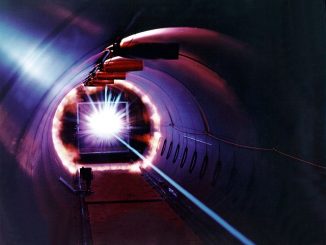
Phase transitions are something we see every day. Typically, a phase transition happens when a certain parameter is changed. In the case of ice melting or steam evaporating from a boiling pot, it’s the change in temperature that brings about the change in phase. These kinds of transitions are easily observable because they happen on the macroscopic level.
On the other hand, transitions that happen on the microscopic level — such as quantum level transitions — are almost impossible to observe because of the very nature of quantum particles. They’re just so tiny and there are certain conditions that need to be met and maintained.
Two years ago, an example of a quantum level phase transition — called the photon-blockade breakdown — was discovered for the first time. What makes this phase transition unique is the fact that instead of temperature, the change is brought about by the amount of power pumped into the system.
During a photon blockade, a photon (which is a particle of light) fills a cavity in an optical system to block other photons from getting through. This is the system’s opaque phase.
As more power is inputted, the photons being blocked grow to critical numbers and at a certain point, the blockade eventually breaks down, and the state of the system shifts from being opaque to being transparent.
Photo blockade breakdown — just like ice melting into water — is referred to as a ‘first-order’ phase transition because two phases can exist at the same time on either side of the transition.
For the last two years, this photon blockade breakdown was only a product of speculation. Luckily, through the collaboration of scientists from the Institute of Science and Technology in Austria led by Johannes Fink, photon blockade breakdown has now evolved from a mere theoretical prediction to an actual observable event.
For their experiment, Fink and his team made use of a microchip with a superconducting microwave resonator as their cavity, and a few superconducting qubits as their atoms. They chilled the microchip to nearly absolute zero (0.01 Kelvin) to nullify the effect of temperature on the system. Then they transmitted a continuous microwave tone to the chip’s resonator input to produce the influx of photons. Finally, they measured the microwave flux being transmitted. What they found was that at certain power inputs, a signal kept flipping between zero transmission and full transmission — proof that two distinct phases have occurred simultaneously.
“We have observed this random switching between opaque and transparent for the first time and in agreement with theoretical predictions,” lead author Johannes Fink was quoted as saying.
As a result of this breakthrough, it will now be possible to study quantum phase transition in greater detail, which can in turn lead to a better understanding of quantum systems in the future.
According to the study which has now been published in the journal Physical Review X, potential applications of this find are memory storage devices and quantum computer processors.




Leave a Reply